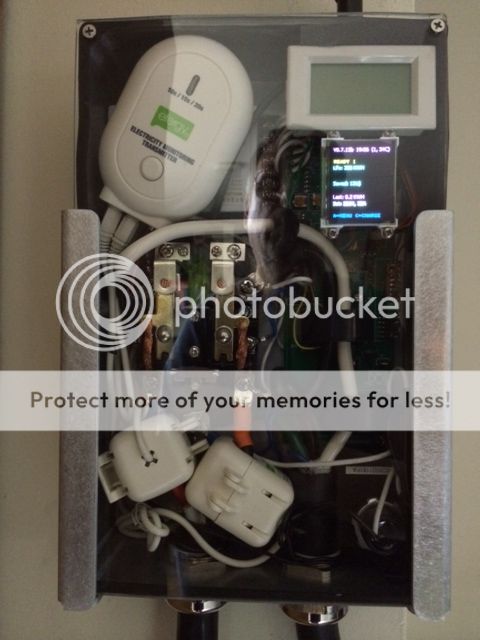This is an interesting thread; many opinions both pro and con, so I thought I'd weigh in on the JuiceBox since I just took the plunge. :mrgreen:
First, the support I've received from EMW (mostly from owner Valery and his wife Julia) has been terrific. True, there were no phone calls, only emails, but I never had to wait longer than about 12 hours for a response. A product like this really does bring up a lot of questions prior, during and after the sale. Fortunately, I live close to EMW's manufacturing facility in San Carlos, so I have been there in person a couple of times, including yesterday to Will Call my order to waive shipping charges. I also was provided a special accommodation with respect to my JB order and its final assembly by EMW. This amounted to using my own, pre-existing J1772, 25' long cable in the assembly, because I felt the internal connections and routing of the power conductors was critical in the final assembly to get right the first time. This was accomplished at no extra charge. THANK YOU EMW!
My opinion of JuiceBox (fully optioned in basic enclosure) is absolutely stellar! I especially like the additional functionality in all the options; WiFi Internet access, LCD and remote operation via the four button key fob. These options truly make the JB shine even in the basic model enclosure.
The only "issue" I have with the design is with the actual size of the LCD. Although colorful (based on TFT technology), the viewable area is quite small. However, the text is quite sharp, when in close proximity to the front of the enclosure, but from 2 or 3 feet away, it is simply too small to make out any information or navigate thru the menus with the remote key fob. A much larger front panel viewable display would a welcome enhancement.
I plan to replace the metal front cover with plexiglass to see the LCD and all of the internal circuitry. I might add a miniature AC Voltage and Current display monitor as well. I was also pleased to find a BNC connector pass-thru port, cleverly designed for a screw on, swivel style, WiFi mast antenna connected to the top of the enclosure. This comes in handy for the "WPS" pairing to your WiFi router. Slick!
In addition to the WPS feature the other nifty feature via the menu driven user interface on the LCD, is the ability to remotely set the current limit of your J1772 charge port connection to the car, and a timer for scheduled charging operation. There is a lot of potential with WiFi and Internet access, and promise of cell phone apps. Most of these JB features simply do not exist on "brand name" EVSEs at more than double the price of a fully assembled JuiceBox.
All things considered, I consider a JuiceBox a big step up from the list price of $1500 for Toyota's "recommended" Leviton L2 EVSE. I have been using Leviton to charge my VOLT and RAV4 EVs for the last two years. No complaints. It worked and worked well. It was even possible, but not practical to use for portable charging applications. Most L2 EVSEs - even plug-ins - are meant for semi-permanent installation.
A JuiceBox Basic unit, on the other hand, can be effortlessly lifted from its "slip-in" wall mounting bracket in seconds and stowed in the truck of either my VOLT or RAV4 EV. In fact, it fits perfectly in the hidden (sunken) cargo area of a RAV4 without any difficulties at all. For enhanced "portability" I opted to get the hard to find, old style drier, adapter cord (NEMA 10-3P to 14-50R) as an extra cost option from EMW. This will come in handy on road trips to "fast charge" from a friend or family's drier outlet up to 15 or 30A respectively at 240V.
I HIGHLY RECOMMEND this highly versatile, low cost product, especially if "taking it with you" and charging from an available 240V outlet is important to fully appreciate driving electrically in the wild where public charging stations are few and far between!






